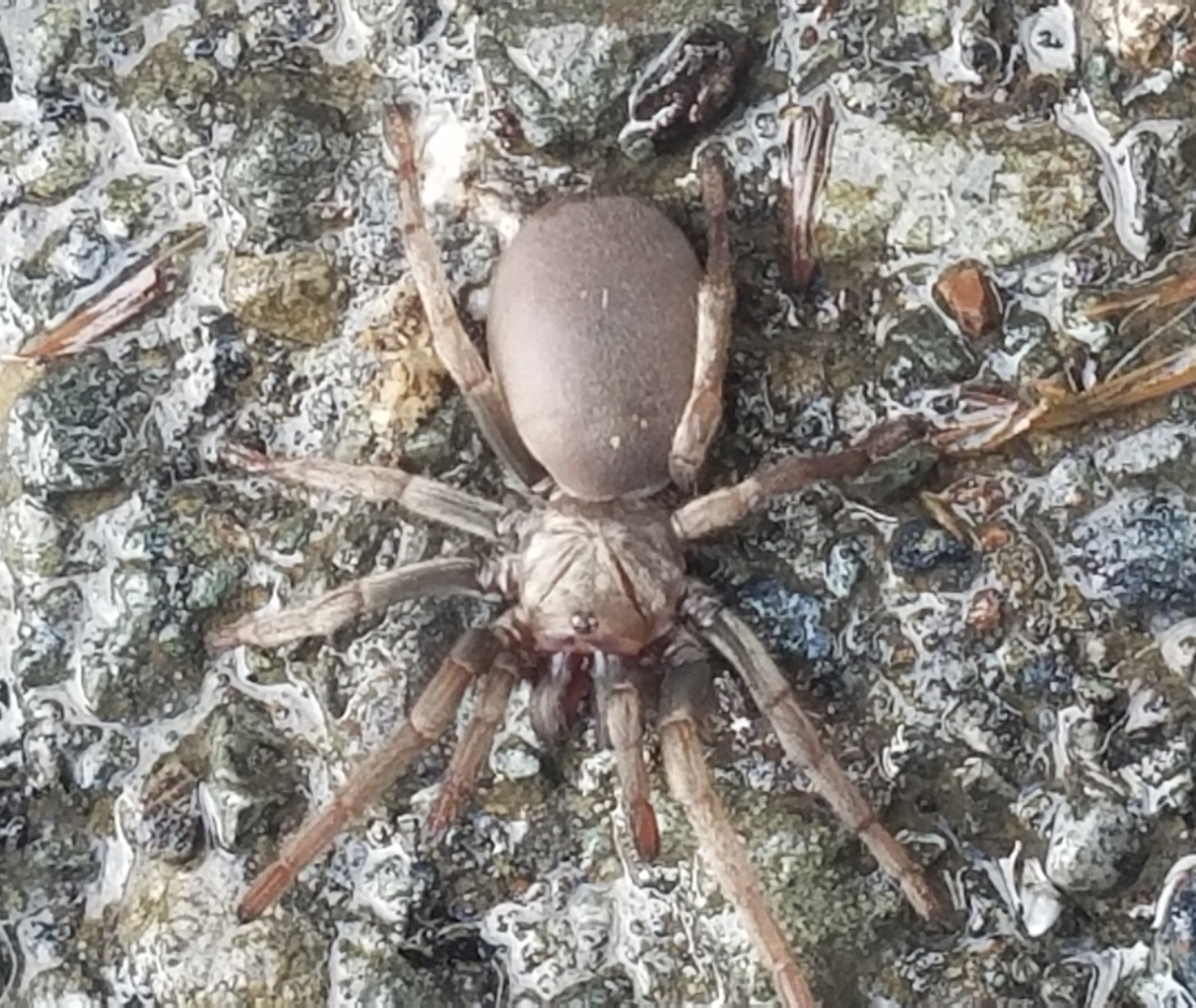
Comments & ID Thoughts
Curious what the species of this spider is? Found outside thinking a pregnant female not sure. Any information helpful.
- Submitted by:

- Submitted: Apr 7, 2018
- Photographed: Apr 7, 2018
- Spider: Calisoga (False Tarantulas)
- Location: Willits, California, United States
- Spotted Outdoors: Under rock, log, or debris
- Found in web?: No
- Attributes: Dorsal
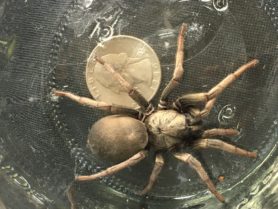
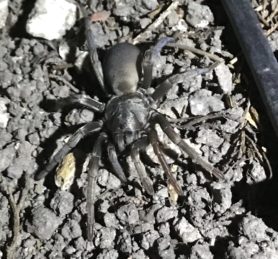
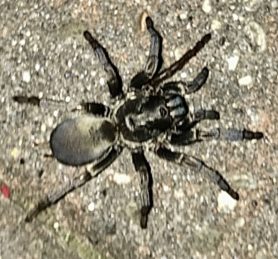
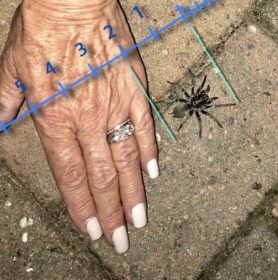
Hi,and welcome to the site. Your spider is a female crevice weaver, family filistatidae.
one species in California, Kukulcania hibernalis. AKA southern house spider.
Regarded totally harmless, not known to bite.
https://bugguide.net/node/view/26400
https://spiderid.com/spider/filistatidae/kukulcania/hibernalis/
OK,The photo is washed out,lets try California trap door spider, Bothriocyrtum californicum
http://nathistoc.bio.uci.edu/spiders/Bothriocyrtum%20californicum.htm
Came across another with the same habitus, Nemesiidae family, AKA false tarantula.
Calisoga genus, one of the trapdoor spiders.
https://bugguide.net/node/view/120961
Hi, I agree with Calisoga (False Tarantula). Filed. Welcome to Spider ID. 🙂
HI, t-wolfe. I also live in Willits and have many spider holes on my property that I thought were tarantula burrows. It’s been suggested they might be Calisoga. In the past weeks, discarded egg cases have been appearing outside many of the holes. Have you seen these? Do you think the calisoga spiders mate in the spring or in the fall?
Hi. I don’t know a lot about these,never kept one but know a few that keep and breed them. A little popular in the pet trade. Endemic to the west coast, like tarantulas, they can live 10 to 15 years in captivity In the wild,a better indicator of mating season is spotting males wandering. They can get washed out of their burrows in rains or irrigation. Tarantulas most often mate in autumn, my guess is these are similar, densely populated areas may even have migrations of them like tarantulas. I have not seen any burrowing spider egg sacs, usually the… Read more »
Hi, Bugman Dan! I have dozens of burrows on my property, all in one area, and over half of them have discarded egg sacs outside the entrances. They started appearing about 3 weeks ago. They contain the molted skins of the spiderlings. I noticed that all the photos you have of Calisoga were taken in Feb-April, which is why I suspect they may mate in spring. That may explain why, looking for tarantulas in the fall, I have never seen any. Shoulda been looking for Calisogas in the spring, maybe! I find little detailed info on life cycles online. Folks… Read more »